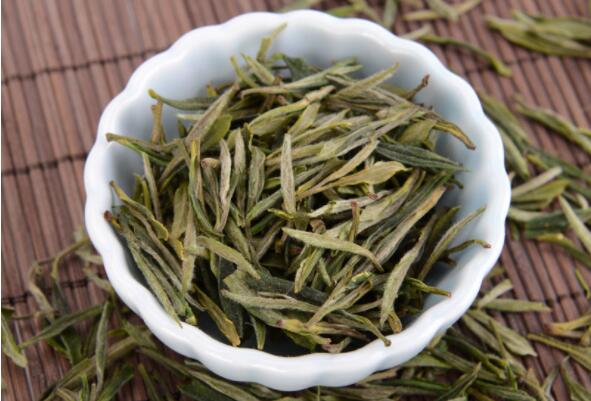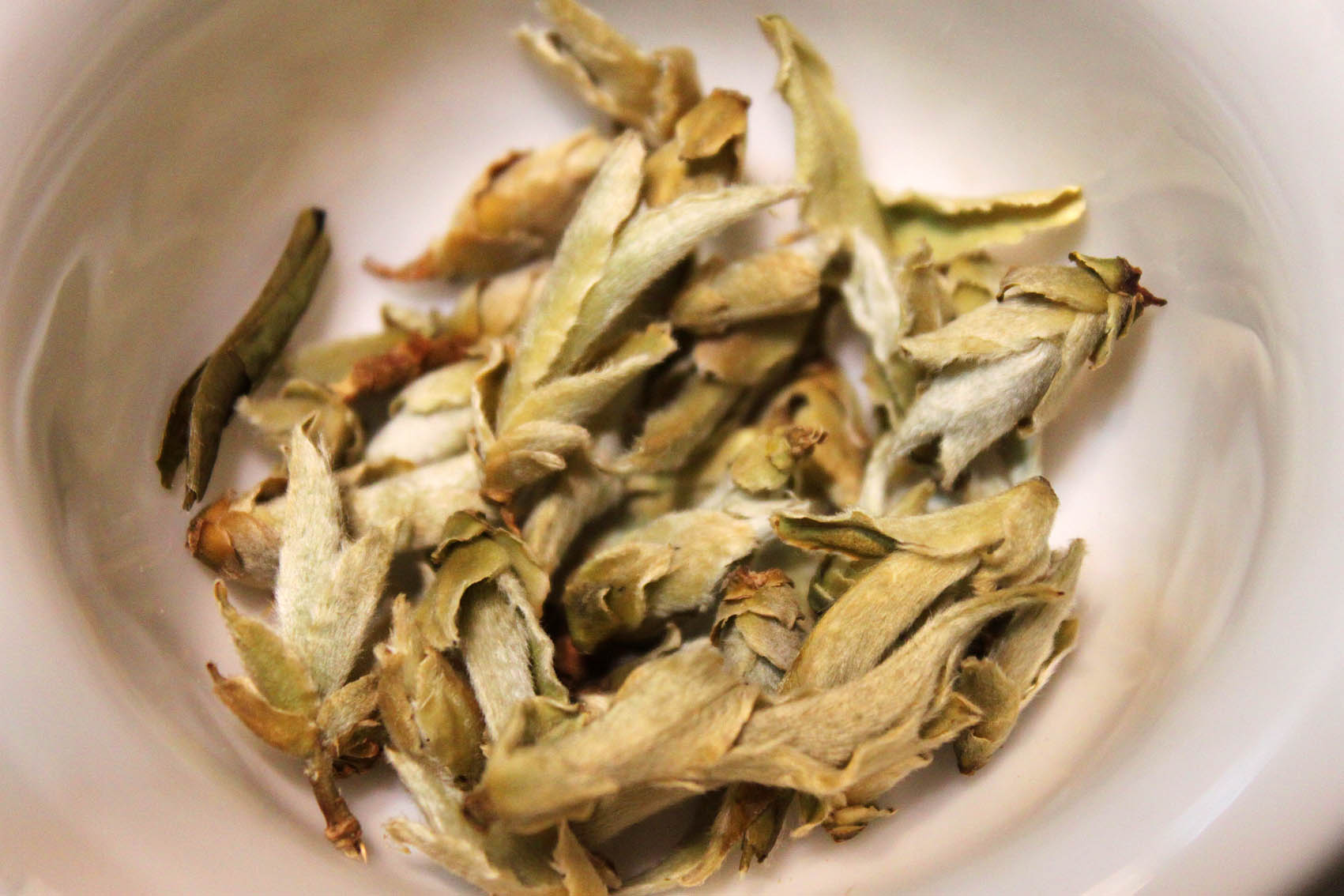There are six major varieties of tea, which in China are known as liù dà chá 六大茶. These six varieties are: green tea (lǜ chá 綠茶), yellow tea (huáng chá 黃茶), white tea (bái chá 白茶), qīng chá 青茶 or wūlóng 烏龍 tea (unfortunately called in the West "blue tea"), black tea (hóng chá 紅茶) and post-fermented tea (hēi chá 黑茶).
All varieties are produced from the same plant, camellia sinensis or tea plant, and their differences are due to the processing methods they follow. To understand these differences it is necessary to know the basic processes through which production takes place.
1. Green tea:
Green tea is characterized by the absence of oxidation and fermentation in its processing, which accounts for the green color of the leaves. After harvesting and minimal withering, oxidation is immediately stopped by the application of heat in the shāqīng 殺青 or enzymatic deactivation. Afterwards, the leaves are rolled or kneaded into different shapes and finally dried.
It is especially important that the harvest takes place at the right time. The spring harvest provides more nutrients and a proper balance of flavour and aromas; in addition, leaves must be collected in the early morning, when they contain more amino acids.
Green tea contains a lot of polyphenols and antioxidants, is energizing and helps prevent diseases, making it one of the most consumed beverages, not only in China, but in the whole world.

Lóngjǐng 龍井 green tea.
2. Yellow tea:
Yellow tea is a really rare variety. China is the only country in the world that produces it, and even within China it is only found in a few locations.
The discovery of yellow tea came about by an accident during the production of green tea. Having packaged this with the leaves still hot and not completely dry, there was a certain fermentation, which changed the color of the leaves towards yellowish tones and produced a sweeter and less bitter taste than in green tea.
Later this technique was developed to produce yellow tea intentionally, and was called mèn huáng 悶黃. This process is what defines the processing of yellow tea, and does not occur in any of the remaining varieties.
Yellow tea is thus produced from unfinished green tea. After harvesting, withering and enzymatic deactivation, the leaf can be rolled and then subjected to mèn huáng, which consists of covering the leaf and heating it, so that the moisture that is released, loaded with aromatic components, is trapped and produces fermentation. Finally, the leaf is dried on a wok or charcoal stove.
Yellow tea therefore lacks oxidation, but has a certain degree of fermentation (10-15%).

Yellow tea.
3. White tea:
White tea is characterized by a simple process, but not an easy one, in which both enzymatic cutting and rolling/kneading are absent.
Basically, the leaves are collected and allowed to dry while withering. Lacking enzymatic cutting, a certain degree of oxidation/fermentation occurs, around 10-15%. Traditionally, white tea is dried for several days alternating between sun and shade, avoiding the hours of greatest intensity of sunlight.
On the other hand, although it may contain leaves, white tea must always contain buds. These buds, which are the most tender part of the plant, have white hairs or trichomes to protect themselves from insects. This white "fluff" is what gives white tea its characteristic colour.
White tea can be produced in the form of loose leaf, or pressed into different shapes for later aging. It has great medicinal properties and in China it is also consumed in decoctions, as well as in infusion.

Yúnnán 雲南 white tea.
4. Qīng chá or wūlóng tea:
Technically, qīng chá refers to a processing method, and wūlóng to a varietal (a subtype of tea plant with a specific genetics), although the first term is rarely used and both are often used interchangeably. As qīng refers to a shade of unspecific green (bluish green or emerald green) this tea has come to be called in the West as "blue tea".
Wūlóng is a semi-oxidized/fermented tea. During its production each of the five basic processes takes place, with the particularity that rolling and oxidation are repeated several times. The range of oxidation is very wide, between 8 and 80% approximately, which can give rise to "green" wūlóng or "black" wūlóng. The leaves are rolled and left to oxidize, then re-rolled and oxidized again. This creates several "layers" of flavour and aroma, which will later be released as the tea remains brewing. It is undoubtedly the type of tea with the most complex and rich flavours, with a soft floral and fruity aroma. Finally, the tea is dried and baked.

Wūlóng 烏龍 tea.
5. Black tea:
"Black tea" is basically a Western denomination, since in China it is known as "red tea" (hóng chá 紅茶).
Black tea is characterized by complete oxidation/fermentation, and by lacking enzymatic deactivation.
In general, the entire production process can take place in a single day. Black tea undoubtedly has the most intense flavours, and is also somewhat more bitter and astringent, due to the presence of catechins.
Although it has more caffeine than green tea, it is less digestible and does not pass into the blood, so it is not as energizing.

Yúnnán 雲南 hóng chá 紅茶.
6. Hēi chá:
Hēi chá 黑茶 (literally, "black tea") has a true bacterial fermentation (although it is not a fermentation in which alcohol is produced), and follows a more particular process. At first it follows a processing similar to that of green tea, but before the leaves dry completely, it is stored for maturation or aging (as if it were a good wine).
The best known type in the West of hēi chá is Pǔ'ěr 普洱, produced in the region of the same name. In turn, there are two types of pǔ'ěr: dark or cooked pǔ'ěr (shú chá 熟茶, which we know as "red tea"), and the raw or green pǔ'ěr (shēng chá 生茶). Depending on which of them will occur, the aging process can last from a few months to several decades. In China, old pǔ'ěr can reach exorbitant prices. Pǔ'ěr has recently become famous in the West for its extraordinary health benefits, including its slimming properties.

Post-fermented tea (hēi chá 黑茶).
Although each type of tea has its unique characteristics and properties, most varieties, coming from the same plant, share many of its benefits. We see that the world of pure tea is very rich, and offers us a wide range of varieties, flavours and aromas without having to resort to the famous aromatized blends that are so fashionable in the West today.
